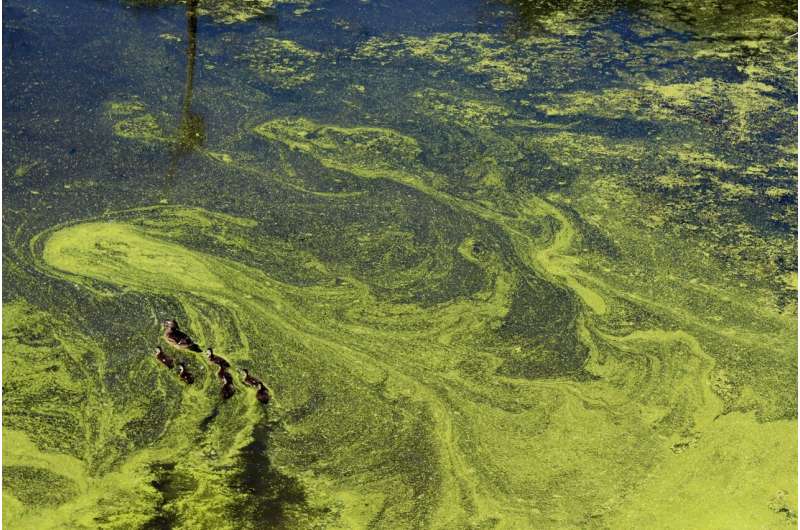Biochar may help fight against harmful algal blooms

Toufiq Reza, biomedical and chemical engineering and sciences assistant professor, and Spencer Fire, ocean engineering and marine sciences assistant professor, have collaborated in researching mitigation and control of harmful algal blooms. Their goal is to utilize locally produced low-cost sustainable biochar to control harmful algal blooms in St. Lucie Estuary, Indian River Lagoon, Tampa Bay Estuary and Sarasota Bay.
The biochar, a porous carbon material, is created using waste biomass, such as agricultural wastes, as well as sargassum, a floating, seaweed algae that has been in the news recently for overtaking beaches in South Florida and Mexico. Using a high-temperature retort—like a furnace—the waste is turned into biochar, which would be then spread across the lagoon water. As with the activated carbon in a Brita or PUR water filter, the biochar would absorb the toxins in the water, and ultimately fall to the bottom, trapping the toxins in the process.
"Our goal is to use that biochar to remove toxins from different harmful algal blooms like red tide, pyrodinium, and blue-green algae" Reza said. "So far, the result has been amazing."
It has been an eye-opening experience for students, Reza added.
"Students have been highly motivated. For example, originally from Jamaica, Cadianne Chambers, a chemical engineering Ph.D. student, has seen firsthand the harmful algal bloom and sargassum in her country. She's been excited about how effective biochar could be to mitigate harmful algal blooms. Other undergraduate students, like Russel Smith from Ohio and Savannah Grimms from Illinois, are also aware of the harmful algal bloom devastations on the Great Lakes and they are excited to find an engineering solution using their engineering knowledge."
Reza and Fire met in 2019, and the following year they began collaborating on research proposals. The ability to complement each other's research has led to this collaboration, with the goal of improving the community around them. Having lived near the Indian River Lagoon for some time, Fire was familiar with a lot of the effects that harmful algal blooms have on human and wildlife health and water quality. Coupled with Reza's background in chemical engineering, the two have been able to turn Fire's analysis of water quality issues into green and sustainable ways to solve the problems.
The projects have also led to work with those in the community. Reza and Fire have been working with a local biochar producer in Indiantown as well as Panther alumna and owner of Treasure Coast Shellfish Nicolette Mariano, who is on the research team's advisory board.
The opportunity to assist businesses is something that has added an extra layer to Fire's side of the research. Another Panther alumnus, David Tomasko, executive director of Sarasota Bay Estuary Program, aims to reduce the negative impact of Sarasota Bay from red tide. Biochar could be a potential solution to this problem.
"Someone who owns an aquaculture pen and has a big crop of oysters or shellfish, and then red tide comes in, they could lose their entire crop overnight if there's a big harmful algal bloom," Fire said. "So, having an actual application that can be used by folks to potentially not have a catastrophic business loss is one of the times I've ever been able to look at a problem and say, 'Hey, there's a solution for that.'"
Reza and Fire will prepare articles about their research findings in the upcoming months.
Provided by Florida Institute of Technology




















